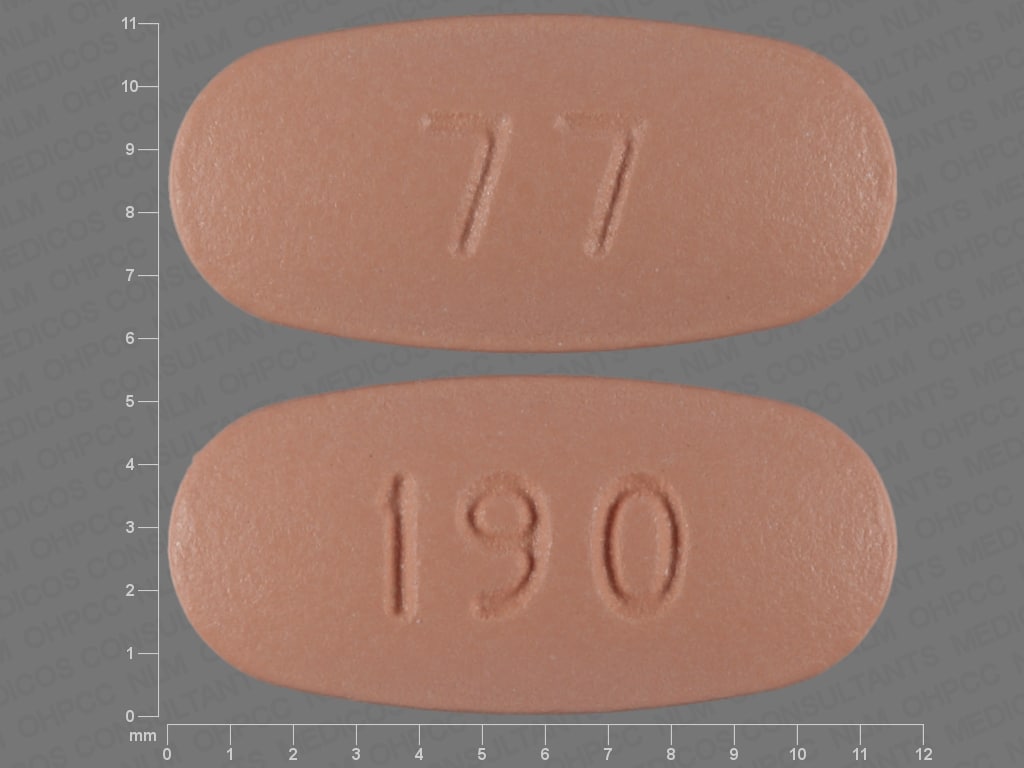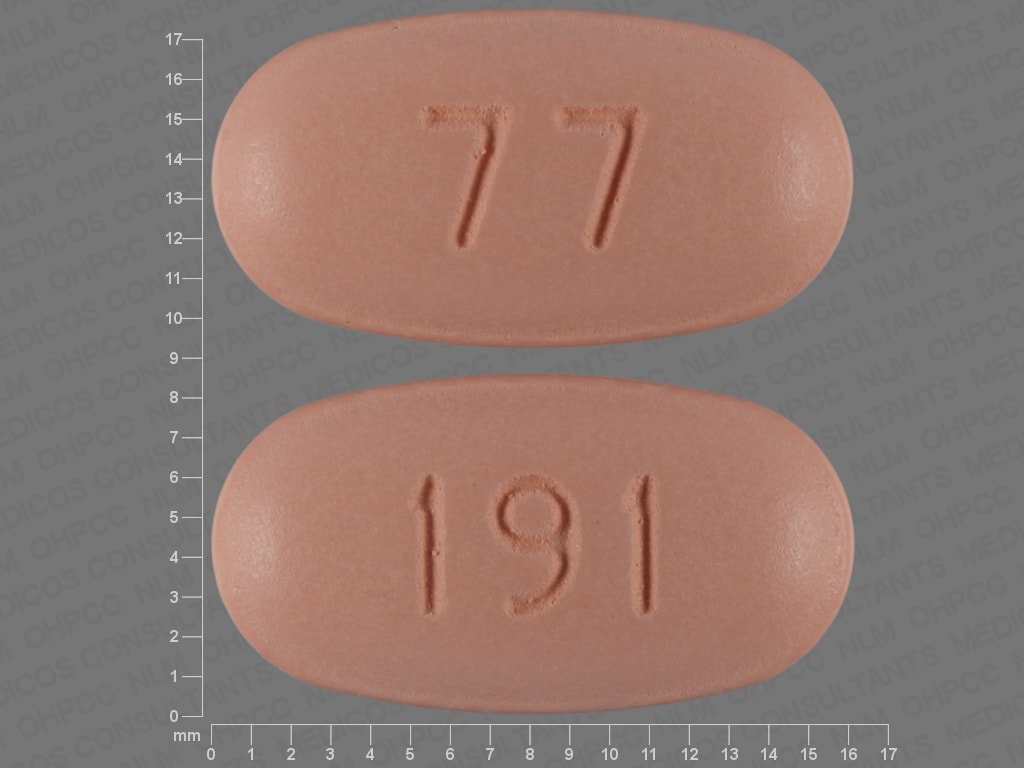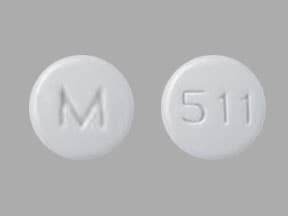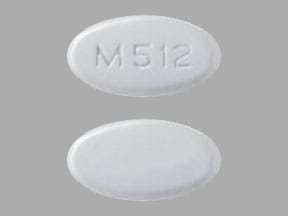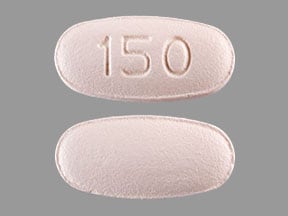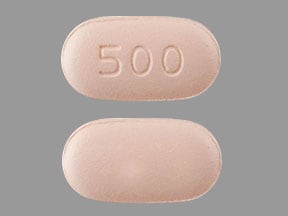Boxed Warning
Warfarin interaction:
Patients receiving concomitant capecitabine and oral coumarin-derivative anticoagulant therapy should have their anticoagulant response (INR or PT) monitored frequently in order to adjust the anticoagulant dose accordingly. A clinically important capecitabine-warfarin drug interaction was demonstrated in a clinical pharmacology trial. Altered coagulation parameters and/or bleeding, including death, have been reported in patients taking capecitabine concomitantly with coumarin-derivative anticoagulants such as warfarin and phenprocoumon. Postmarketing reports have shown clinically significant increases in PT and INR in patients who were stabilized on anticoagulants at the time capecitabine was introduced. These events occurred within several days and up to several months after initiating capecitabine therapy and, in a few cases, within 1 month after stopping capecitabine. These events occurred in patients with and without liver metastases. Age >60 years and a diagnosis of cancer independently predispose patients to an increased risk of coagulopathy.
Dosage Forms
Excipient information presented when available (limited, particularly for generics); consult specific product labeling.
Tablet, Oral:
Xeloda: 150 mg, 500 mg
Generic: 150 mg, 500 mg
Pharmacology
Mechanism of Action
Capecitabine is a prodrug of fluorouracil. It undergoes hydrolysis in the liver and tissues to form fluorouracil which is the active moiety. Fluorouracil is a fluorinated pyrimidine antimetabolite that inhibits thymidylate synthetase, blocking the methylation of deoxyuridylic acid to thymidylic acid, interfering with DNA, and to a lesser degree, RNA synthesis. Fluorouracil appears to be phase specific for the G1 and S phases of the cell cycle.
Pharmacokinetics/Pharmacodynamics
Absorption
Rapid and extensive (rate and extent reduced by food)
Metabolism
Hepatic: Inactive metabolites: 5′-deoxy-5-fluorocytidine, 5′-deoxy-5-fluorouridine; Tissue: Enzymatically metabolized to fluorouracil, which is then metabolized to active metabolites, 5-fluoroxyuridine monophosphate (F-UMP) and 5-5-fluoro-2’-deoxyuridine-5’-O-monophosphate (F-dUMP)
Excretion
Urine (96%, 57% as α-fluoro-β-alanine; <3% as unchanged drug); feces (<3%)
Time to Peak
1.5 hours; Fluorouracil: 2 hours
Half-Life Elimination
~0.75 hour
Protein Binding
<60%; ~35% to albumin
Use in Specific Populations
Special Populations: Renal Function Impairment
In moderate to severe renal function impairment, there is increased exposure to inactive metabolites (FBAL and 5’-DFUR) and a 25% increase in exposure to capecitabine.
Special Populations: Hepatic Function Impairment
In mild to moderate hepatic dysfunction due to liver metastases, capecitabine AUC and Cmax increased 60%; 5-FU was not affected. The effect of severe hepatic dysfunction is not known.
Special Populations: Elderly
In a study of patients ranging from ages 27 to 86 years, age had no significant influence on the pharmacokinetics of 5’-DFUR, 5-FU; a 20% increase in age resulted in a 15% increase in the AUC of alpha-fluoro-beta-alanine (FBAL).
Special Populations: Race
Following oral administration of 825 mg/m2 capecitabine twice daily for 14 days, Japanese patients (n = 18) had about 36% lower Cmax and 24% lower AUC for capecitabine compared to Caucasian patients (n = 22). Japanese patients had also about 25% lower Cmax and 34% lower AUC for alpha-fluoro-beta-alanine than Caucasian patients, although the clinical significance of these differences is unknown.
Use: Labeled Indications
Breast cancer (metastatic):
Monotherapy: Treatment of metastatic breast cancer resistant to both paclitaxel and an anthracycline-containing regimen or resistant to paclitaxel in patients for whom further anthracycline therapy is not indicated
Combination therapy: Treatment of metastatic breast cancer (in combination with docetaxel) after failure of a prior anthracycline-containing regimen
Colorectal cancer: First-line treatment of metastatic colorectal cancer when treatment with a fluoropyrimidine alone is preferred; adjuvant therapy of Dukes' C colon cancer after complete resection of the primary tumor when fluoropyrimidine therapy alone is preferred
Use: Off Label
Anal carcinomab
Data from a phase II study support the use of capecitabine as an alternative to continuous fluorouracil infusion (in combination with mitomycin and radiation therapy) in the treatment of squamous cell carcinoma of the anal canal Oliveria 2016. Additional data from two retrospective studies also support the use of capecitabine in combination with mitomycin and radiation therapy in the treatment of anal carcinoma Meulendijks 2014, Thind 2014.
Breast cancer (adjuvant therapy)ayes
Data from a multicenter, open-label, randomized phase 3 trial support the use of capecitabine as adjuvant treatment in patients with HER2-negative primary breast cancer who had residual invasive disease after neoadjuvant therapy (containing an anthracycline, taxane, or both) and surgery Masuda 2017.
Guidelines from the American Society of Clinical Oncology (ASCO) for selection of optimal adjuvant chemotherapy and targeted therapy in early breast cancer support the use of adjuvant capecitabine therapy in patients with early stage hormone receptor-negative, HER2-negative breast cancer with invasive residual disease at surgery following standard anthracycline and taxane neoadjuvant therapy Denduluri 2018.
Esophageal and gastric cancersa
Data from multiple well-done prospective clinical trials Bang 2010, Cunningham 2008, Hong 2004, Javle 2009, Kang 2009, Lee 2006, Sumpter 2005 and one retrospective study Lee 2007 support the use of capecitabine in the treatment of patients with esophageal and gastric cancers.
Head and neck cancer, squamous cell (recurrent or metastatic; palliative treatment)c
Data from a small multicenter study suggest that capecitabine may be of benefit in the palliative treatment of locally advanced or metastatic squamous cell head and neck cancer that has recurred following platinum-based therapy Martinez-Trufero 2010.
Hepatobiliary cancer (adjuvant therapy)b
Data from a randomized controlled phase III study support the use of capecitabine in the adjuvant treatment following complete radical resection of gall bladder cancer (including liver and pancreatic resection as appropriate) or cholangiocarcinoma Primrose 2017.
Hepatobiliary cancers (advanced)b
Data from multiple phase II clinical trials in patients with advanced hepatobiliary cancers support the use of capecitabine (in combination with either cisplatin, gemcitabine, or oxaliplatin) for the treatment of this condition Kim 2003, Knox 2005, Nehls 2008.
Neuroendocrine (islet cell) tumors (metastatic or unresectable)c
Data from a retrospective cohort study in patients with metastatic pancreatic endocrine carcinomas who had received capecitabine and temozolomide at a single center suggest that capecitabine (in combination with temozolomide) may be beneficial for the treatment of this condition Strosberg 2011.
Ovarian, fallopian tube, or peritoneal cancers (refractory)b
Data from a phase II, single-arm study in patients with platinum and taxane resistant ovarian, fallopian tube, or peritoneal cancer support the use of capecitabine in the treatment of this condition Wolf 2006.
Pancreatic cancer (locally advanced or metastatic)ayes
Data from a phase 2 study evaluating the use of capecitabine in patients with advanced or metastatic pancreatic cancer support the use of capecitabine (monotherapy) for the treatment of this condition Cartwright 2002. Additionally, data from a phase III, randomized study demonstrated that the combination of capecitabine and gemcitabine (GEM-CAP regimen) significantly improved objective response and progression-free survival as compared to gemcitabine alone Cunningham 2009.
According to the ASCO guidelines for metastatic pancreatic cancer, capecitabine (in combination with gemcitabine) may be offered for first-line management of metastatic disease in patients with a performance status of 2 or comorbidities that prevent use of more aggressive treatment regimens.
Pancreatic cancer, potentially curable (adjuvant therapy)ayes
Data from a randomized, multicenter, phase 3 study support the use of capecitabine (in combination with gemcitabine) in the adjuvant treatment of completely resected pancreatic adenocarcinoma Neoptolemos 2017.
According to the ASCO guidelines for potentially curable pancreatic cancer, while first-line adjuvant therapy with another regimen is preferred, capecitabine (in combination with gemcitabine) is an alternate adjuvant therapy option (in the absence of contraindications) if toxicity or tolerance are concerns with the preferred therapy.
Unknown primary cancerb
Data from a phase II study in patients with cancer of an unknown primary site treated with capecitabine (in combination with carboplatin and gemcitabine) support the use of capecitabine for the treatment of this condition especially in patients with liver metastases Schneider 2007. Additional data from a phase II study using capecitabine (in combination with oxaliplatin) also support the use of capecitabine for the treatment of patients with unknown primary cancer Hainsworth 2010.
Contraindications
Known hypersensitivity to capecitabine, fluorouracil, or any component of the formulation; severe renal impairment (CrCl <30 mL/minute)
Canadian labeling: Additional contraindications (not in the US labeling): Known complete absence of dihydropyrimidine dehydrogenase (DPD) activity; concomitant administration with sorivudine or chemically related analogues (eg, brivudine)
Dosage and Administration
Dosing: Adult
Note: The manufacturer suggests dosing at 5,600 mg/day (in 2 divided doses) in patients with a body surface area of ≥2.18 m2 for labeled indications (refer to product labeling for details).
Anal carcinoma (off-label use): Oral: 825 mg/m2 twice daily 5 days/week (Monday through Friday) (in combination with mitomycin [on day 1 only]) during radiation therapy; radiation therapy occurred over 5 to 6 weeks (Oliveria 2016) or 825 mg/m2 twice daily on radiation therapy days (in combination with mitomycin [on day 1 only] and radiation therapy) (Meulendijks 2014; Thind 2014).
Breast cancer, metastatic: Oral: 1,250 mg/m2 twice daily for 2 weeks, every 21 days (as either monotherapy or in combination with docetaxel).
Breast cancer, metastatic (off-label dosing): Adults ≥65 years of age: Oral: 1,000 mg/m2 twice daily on days 1 to 14 of a 21-day treatment cycle for at least 2 and up to 6 cycles or longer (Bajetta 2005).
Breast cancer, metastatic (off-label combination): Oral: 1,000 mg/m2 twice daily (in combination with ixabepilone) on days 1 to 14 of a 3-week cycle until disease progression or unacceptable toxicity (Thomas 2007).
Breast cancer, metastatic, HER2+ (off-label combinations): Oral: 1,000 mg/m2 twice daily (in combination with lapatinib) on days 1 to 14 of a 3-week cycle until disease progression or unacceptable toxicity (Geyer 2006) or 1,250 mg/m2 twice daily (in combination with trastuzumab) on days 1 to 14 of a 3-week cycle (Bartsch 2007).
Breast cancer, metastatic, HER2+ with brain metastases, first-line therapy (off-label combination): Oral: 1,000 mg/m2 twice daily (in combination with lapatinib) on days 1 to 14 of a 3-week cycle until disease progression or unacceptable toxicity (Bachelot 2012).
Breast cancer, adjuvant therapy (off label; in HER2-negative patients with residual disease after neoadjuvant therapy and surgery): Oral: 1,250 mg/m2 twice daily on days 1 to 14 of a 21-day treatment cycle for 6 to 8 cycles (Masuda 2017).
Colorectal cancer, metastatic: Oral: 1,250 mg/m2 twice daily for 2 weeks, every 21 days. Note: Capecitabine toxicities, particularly hand-foot syndrome, may be higher in North American populations; therapy initiation at doses of 1,000 mg/m2 twice daily (for 2 weeks every 21 days) may be considered (Haller 2008).
Colorectal cancer (off-label combination): Oral: 1,000 mg/m2 twice daily (in combination with oxaliplatin) on days 1 to 14 of a 3-week cycle for 8 or 16 cycles (Cassidy 2008; Haller 2011; Schmoll 2007).
Dukes C colon cancer, adjuvant therapy: Oral: 1,250 mg/m2 twice daily for 2 weeks, every 21 days, for a recommended total duration of 24 weeks (8 cycles of 2 weeks of drug administration and 1 week rest period).
Esophageal and gastric cancers (off-label uses): Oral:
Preoperative or definitive chemoradiation: 800 mg/m2 twice daily (in combination with cisplatin and radiation) on days 1 to 5 weekly for 5 weeks (Lee 2007) or 625 mg/m2 twice daily (in combination with oxaliplatin and radiation) on days 1 to 5 weekly for 5 weeks (Javle 2009).
Postoperative chemoradiation: 625 to 825 mg/m2 twice daily during radiation therapy (Lee 2006).
Locally advanced or metastatic (chemoradiation not indicated): 1,000 to 1,250 mg/m2 twice daily (monotherapy or in combination with cisplatin with or without trastuzumab) on days 1 to 14 of a 3-week cycle (Bang 2010; Hong 2004; Kang 2009) or 625 mg/m2 twice daily (in combination with epirubicin and cisplatin or oxaliplatin) on days 1 to 21 of a 3-week cycle for up to 8 cycles (Cunningham 2008; Sumpter 2005).
Gastroesophageal cancer, advanced, palliative treatment: Frail and/or elderly patients: A dose optimization study that examined 60%, 80%, or 100% of a 625 mg/m2 twice daily dose (on days 1 to 21 of a 21-day cycle; in combination with oxaliplatin) found that the 60% dose was not inferior (for progression-free survival) and had less toxicity compared to the full dose (Hall 2019).
Head and neck cancer, squamous cell (recurrent or metastatic; palliative treatment) (off-label use; based on limited data): Oral: 1,250 mg/m2 twice daily on days 1 to 14 of a 21-day treatment cycle for at least 3 cycles; continue until disease progression or unacceptable toxicity (Martinez-Trufero 2010).
Hepatobiliary cancer, adjuvant therapy (off-label use): Oral: 1,250 mg/m2 twice daily on days 1 to 14 of a 21-day treatment cycle for 8 cycles (Primrose 2017).
Hepatobiliary cancers, advanced (off-label use): Oral: 650 mg/m2 twice daily (in combination with gemcitabine) on days 1 to 14 of a 3-week cycle (Knox 2005) or 1,000 mg/m2 twice daily (in combination with oxaliplatin) on days 1 to 14 of a 3-week cycle (Nehls 2008) or 1,250 mg/m2 twice daily (in combination with cisplatin) on days 1 to 14 of a 3-week cycle (Kim 2003); all regimens continued until disease progression or unacceptable toxicity.
Neuroendocrine (pancreatic/islet cell) tumors, metastatic or unresectable (off-label use; based on limited data): Oral: 750 mg/m2 twice daily (in combination with temozolomide) on days 1 to 14 of a 4-week cycle (Strosberg 2011).
Ovarian, fallopian tube, or peritoneal cancer, platinum-refractory (off-label use): Oral: 1,000 mg/m2 twice daily on days 1 to 14 of a 3-week cycle until disease progression or unacceptable toxicity (Wolf 2006).
Pancreatic cancer, metastatic (off-label use): Oral: 1,250 mg/m2 twice daily on days 1 to 14 of a 3-week cycle (Cartwright 2002) or 830 mg/m2 twice daily (in combination with gemcitabine) on days 1 to 21 of a 4-week cycle until disease progression or unacceptable toxicity (Cunningham 2009).
Pancreatic cancer, potentially curable, adjuvant therapy (off-label use; alternative therapy): Note: American Society of Clinical Oncology guidelines for potentially curable pancreatic cancer recommend 6 months of adjuvant therapy if recovery is complete; while first-line therapy with another regimen is preferred, the capecitabine/gemcitabine regimen is an option if toxicity/tolerance are concerns with the preferred therapy (ASCO [Khorana 2019]).
Oral: 830 mg/m2 twice daily on days 1 to 21 every 28 days (in combination with gemcitabine) for 6 cycles beginning within 12 weeks of resection (Neoptolemos 2017).
Unknown primary cancer (off-label use): Oral: 1,000 mg/m2 twice daily (in combination with oxaliplatin) on days 1 to 14 of a 3-week cycle for up to 6 cycles or until disease progression (Hainsworth 2010) or 800 mg/m2 twice daily (in combination with carboplatin and gemcitabine) on days 1 to 14 of a 3-week cycle for up to 8 cycles or until disease progression or unacceptable toxicity (Schneider 2007).
Dosing: Geriatric
The elderly may be more sensitive to the toxic effects of fluorouracil. Insufficient data are available to provide dosage modifications. Also refer to Adult dosing.
Dosing: Adjustment for Toxicity
See table (Note: Capecitabine dosing recommendations apply to both monotherapy and when used in combination therapy with docetaxel).
Monitor carefully for toxicity and adjust dose as necessary. Doses reduced for toxicity should not be increased at a later time. For combination therapy, also refer to docetaxel product labeling for docetaxel dose modifications. If treatment delay is required for either capecitabine or docetaxel, withhold both agents until appropriate to resume combination treatment.
|
Toxicity Grades |
During a Course of Therapy |
Dose Adjustment for Next Cycle (% of starting dose) |
|---|---|---|
|
Grade 1 |
Maintain dose level |
Maintain dose level |
|
Grade 2 |
||
|
1st appearance |
Interrupt until resolved to grade 0 to 1 |
100% |
|
2nd appearance |
Interrupt until resolved to grade 0 to 1 |
75% |
|
3rd appearance |
Interrupt until resolved to grade 0 to 1 |
50% |
|
4th appearance |
Discontinue treatment permanently |
|
|
Grade 3 |
||
|
1st appearance |
Interrupt until resolved to grade 0 to 1 |
75% |
|
2nd appearance |
Interrupt until resolved to grade 0 to 1 |
50% |
|
3rd appearance |
Discontinue treatment permanently |
|
|
Grade 4 |
||
|
1st appearance |
Discontinue permanently |
|
|
or |
||
|
If in the patient's best interest to continue, interrupt until resolved to grade 0 to 1 |
50% |
Table has been converted to the following text.
Recommended Capecitabine Dosage Adjustments
Note: Capecitabine dosing recommendations apply to both monotherapy and when used in combination therapy with docetaxel. Monitor carefully for toxicity and adjust dose as necessary. Doses reduced for toxicity should not be increased at a later time. For combination therapy, also refer to docetaxel product labeling for docetaxel dose modifications. If treatment delay is required for either capecitabine or docetaxel, withhold both agents until appropriate to resume combination treatment.
Grade 1 toxicity:
- Maintain dose level during course of therapy and for next cycle.
Grade 2 toxicity:
- 1st appearance: Interrupt therapy until resolved to grade 0 to 1 during course of therapy; administer 100% of starting dose for next cycle.
- 2nd appearance: Interrupt therapy until resolved to grade 0 to 1 during course of therapy; administer 75% of starting dose for next cycle.
- 3rd appearance: Interrupt therapy until resolved to grade 0 to 1 during course of therapy; administer 50% of starting dose for next cycle.
- 4th appearance: Discontinue treatment permanently.
Grade 3 toxicity:
- 1st appearance: Interrupt therapy until resolved to grade 0 to 1 during course of therapy; administer 75% of starting dose for next cycle.
- 2nd appearance: Interrupt therapy until resolved to grade 0 to 1 during course of therapy; administer 50% of starting dose for next cycle.
- 3rd appearance: Discontinue treatment permanently.
Grade 4 toxicity:
- 1st appearance: Discontinue permanently, or, if in the patient's best interest to continue, interrupt until resolved to grade 0 to 1; administer 50% of initial dose for next cycle.
Dosage adjustments for hematologic toxicity in combination therapy with ixabepilone:
Neutrophils <500/mm3 for ≥7 days or neutropenic fever: Hold for concurrent diarrhea or stomatitis until neutrophils recover to >1000/mm3, then continue at same dose
Platelets <25,000/mm3 (or <50,000/mm3 with bleeding): Hold for concurrent diarrhea or stomatitis until platelets recover to >50,000/mm3, then continue at same dose
Dosing: Obesity
ASCO Guidelines for appropriate chemotherapy dosing in obese adults with cancer: Utilize patient's actual body weight (full weight) for calculation of body surface area- or weight-based dosing, particularly when the intent of therapy is curative; manage regimen-related toxicities in the same manner as for nonobese patients; if a dose reduction is utilized due to toxicity, consider resumption of full weight-based dosing with subsequent cycles, especially if cause of toxicity (eg, hepatic or renal impairment) is resolved (Griggs 2012). The manufacturer suggests dosing at 5,600 mg/day (in 2 divided doses) in patients with a body surface area of ≥2.18 m2 (refer to product labeling for details).
Extemporaneously Prepared
A 10 mg/mL oral solution may be made with tablets. Crush four 500 mg tablets in a mortar and reduce to a fine powder; add to 200 mL water. Capecitabine tablets are water soluble (data on file from Roche). Administer immediately after preparation, 30 minutes after a meal.
Judson IR, Beale PJ, Trigo JM, et al, “A Human Capecitabine Excretion Balance and Pharmacokinetic Study After Administration of a Single Oral Dose of 14C-Labelled Drug,” Invest New Drugs, 1999, 17(1):49-56.10555122
Administration
Oral: Usually administered in 2 divided doses (in the morning and evening). Doses should be taken with water within 30 minutes after a meal. Swallow tablets whole. Avoid cutting or crushing tablets.
Storage
Store at 25°C (77°F); excursions are permitted between 15°C and 30°C (59°F and 86°F). Keep bottle tightly closed.
Capecitabine Images
Drug Interactions
Allopurinol: May decrease serum concentrations of the active metabolite(s) of Capecitabine. Avoid combination
Baricitinib: Immunosuppressants may enhance the immunosuppressive effect of Baricitinib. Management: Use of baricitinib in combination with potent immunosuppressants such as azathioprine or cyclosporine is not recommended. Concurrent use with antirheumatic doses of methotrexate or nonbiologic disease modifying antirheumatic drugs (DMARDs) is permitted. Consider therapy modification
BCG (Intravesical): Immunosuppressants may diminish the therapeutic effect of BCG (Intravesical). Avoid combination
BCG (Intravesical): Myelosuppressive Agents may diminish the therapeutic effect of BCG (Intravesical). Avoid combination
Chloramphenicol (Ophthalmic): May enhance the adverse/toxic effect of Myelosuppressive Agents. Monitor therapy
Cimetidine: May increase the serum concentration of Fluorouracil Products. Monitor therapy
Cladribine: May enhance the immunosuppressive effect of Immunosuppressants. Avoid combination
Cladribine: May enhance the myelosuppressive effect of Myelosuppressive Agents. Avoid combination
Cladribine: Agents that Undergo Intracellular Phosphorylation may diminish the therapeutic effect of Cladribine. Avoid combination
CloZAPine: Myelosuppressive Agents may enhance the adverse/toxic effect of CloZAPine. Specifically, the risk for neutropenia may be increased. Monitor therapy
Coccidioides immitis Skin Test: Immunosuppressants may diminish the diagnostic effect of Coccidioides immitis Skin Test. Monitor therapy
Deferiprone: Myelosuppressive Agents may enhance the neutropenic effect of Deferiprone. Management: Avoid the concomitant use of deferiprone and myelosuppressive agents whenever possible. If this combination cannot be avoided, monitor the absolute neutrophil count more closely. Consider therapy modification
Denosumab: May enhance the adverse/toxic effect of Immunosuppressants. Specifically, the risk for serious infections may be increased. Monitor therapy
Dipyrone: May enhance the adverse/toxic effect of Myelosuppressive Agents. Specifically, the risk for agranulocytosis and pancytopenia may be increased Avoid combination
Echinacea: May diminish the therapeutic effect of Immunosuppressants. Consider therapy modification
Fingolimod: Immunosuppressants may enhance the immunosuppressive effect of Fingolimod. Management: Avoid the concomitant use of fingolimod and other immunosuppressants when possible. If combined, monitor patients closely for additive immunosuppressant effects (eg, infections). Consider therapy modification
Folic Acid: May enhance the adverse/toxic effect of Fluorouracil Products. Monitor therapy
Fosphenytoin-Phenytoin: Fluorouracil Products may increase the serum concentration of Fosphenytoin-Phenytoin. Monitor therapy
Gimeracil: May increase the serum concentration of Fluorouracil Products. Avoid combination
Haloperidol: QT-prolonging Agents (Indeterminate Risk - Caution) may enhance the QTc-prolonging effect of Haloperidol. Monitor therapy
Leflunomide: Immunosuppressants may enhance the adverse/toxic effect of Leflunomide. Specifically, the risk for hematologic toxicity such as pancytopenia, agranulocytosis, and/or thrombocytopenia may be increased. Management: Consider not using a leflunomide loading dose in patients receiving other immunosuppressants. Patients receiving both leflunomide and another immunosuppressant should be monitored for bone marrow suppression at least monthly. Consider therapy modification
Lenograstim: Antineoplastic Agents may diminish the therapeutic effect of Lenograstim. Management: Avoid the use of lenograstim 24 hours before until 24 hours after the completion of myelosuppressive cytotoxic chemotherapy. Consider therapy modification
Leucovorin Calcium-Levoleucovorin: May enhance the adverse/toxic effect of Fluorouracil Products. Monitor therapy
Lipegfilgrastim: Antineoplastic Agents may diminish the therapeutic effect of Lipegfilgrastim. Management: Avoid concomitant use of lipegfilgrastim and myelosuppressive cytotoxic chemotherapy. Lipegfilgrastim should be administered at least 24 hours after the completion of myelosuppressive cytotoxic chemotherapy. Consider therapy modification
Mesalamine: May enhance the myelosuppressive effect of Myelosuppressive Agents. Monitor therapy
MetroNIDAZOLE (Systemic): May increase the serum concentration of Fluorouracil Products. Monitor therapy
Natalizumab: Immunosuppressants may enhance the adverse/toxic effect of Natalizumab. Specifically, the risk of concurrent infection may be increased. Avoid combination
Nivolumab: Immunosuppressants may diminish the therapeutic effect of Nivolumab. Consider therapy modification
Ocrelizumab: May enhance the immunosuppressive effect of Immunosuppressants. Monitor therapy
Palifermin: May enhance the adverse/toxic effect of Antineoplastic Agents. Specifically, the duration and severity of oral mucositis may be increased. Management: Do not administer palifermin within 24 hours before, during infusion of, or within 24 hours after administration of myelotoxic chemotherapy. Consider therapy modification
Pidotimod: Immunosuppressants may diminish the therapeutic effect of Pidotimod. Monitor therapy
Pimecrolimus: May enhance the adverse/toxic effect of Immunosuppressants. Avoid combination
Promazine: May enhance the myelosuppressive effect of Myelosuppressive Agents. Monitor therapy
Proton Pump Inhibitors: May diminish the therapeutic effect of Capecitabine. Monitor therapy
QT-prolonging Agents (Highest Risk): QT-prolonging Agents (Indeterminate Risk - Caution) may enhance the QTc-prolonging effect of QT-prolonging Agents (Highest Risk). Management: Monitor for QTc interval prolongation and ventricular arrhythmias when these agents are combined. Patients with additional risk factors for QTc prolongation may be at even higher risk. Monitor therapy
Roflumilast: May enhance the immunosuppressive effect of Immunosuppressants. Consider therapy modification
Siponimod: Immunosuppressants may enhance the immunosuppressive effect of Siponimod. Monitor therapy
Sipuleucel-T: Immunosuppressants may diminish the therapeutic effect of Sipuleucel-T. Management: Evaluate patients to see if it is medically appropriate to reduce or discontinue therapy with immunosuppressants prior to initiating sipuleucel-T therapy. Consider therapy modification
Smallpox and Monkeypox Vaccine (Live): Immunosuppressants may diminish the therapeutic effect of Smallpox and Monkeypox Vaccine (Live). Monitor therapy
Tacrolimus (Topical): May enhance the adverse/toxic effect of Immunosuppressants. Avoid combination
Tofacitinib: Immunosuppressants may enhance the immunosuppressive effect of Tofacitinib. Management: Concurrent use with antirheumatic doses of methotrexate or nonbiologic disease modifying antirheumatic drugs (DMARDs) is permitted, and this warning seems particularly focused on more potent immunosuppressants. Consider therapy modification
Trastuzumab: May enhance the neutropenic effect of Immunosuppressants. Monitor therapy
Upadacitinib: Immunosuppressants may enhance the immunosuppressive effect of Upadacitinib. Avoid combination
Vaccines (Inactivated): Immunosuppressants may diminish the therapeutic effect of Vaccines (Inactivated). Management: Vaccine efficacy may be reduced. Complete all age-appropriate vaccinations at least 2 weeks prior to starting an immunosuppressant. If vaccinated during immunosuppressant therapy, revaccinate at least 3 months after immunosuppressant discontinuation. Consider therapy modification
Vaccines (Live): Immunosuppressants may enhance the adverse/toxic effect of Vaccines (Live). Immunosuppressants may diminish the therapeutic effect of Vaccines (Live). Management: Avoid use of live organism vaccines with immunosuppressants; live-attenuated vaccines should not be given for at least 3 months after immunosuppressants. Exceptions: Smallpox and Monkeypox Vaccine (Live). Avoid combination
Vitamin K Antagonists (eg, warfarin): Fluorouracil Products may increase the serum concentration of Vitamin K Antagonists. Management: Monitor INR and for signs/symptoms of bleeding closely when a fluorouracil product is combined with a vitamin K antagonist (eg, warfarin). Anticoagulant dose adjustment will likely be necessary. Consider therapy modification
Adverse Reactions
Incidence reported for all indications and usage, unless otherwise noted.
>10%:
Cardiovascular: Edema (≤15%)
Central nervous system: Fatigue (≤42%), paresthesia (stage IV breast cancer: 21%), pain (≤12%)
Dermatologic: Palmar-plantar erythrodysesthesia (54% to 60%), dermatitis (27% to 37%)
Gastrointestinal: Diarrhea (47% to 57%), nausea (34% to 43%; stage IV breast cancer: 53%), vomiting (metastatic colorectal cancer, stage IV breast cancer: 27% to 37%; Dukes' C colon cancer: 15%), abdominal pain (metastatic colorectal cancer: 35%; stage IV breast cancer: 20%; Dukes' C colon cancer: 14%), decreased appetite (26%), stomatitis (22% to 25%), anorexia (stage IV breast cancer: 23%; Dukes' C colon cancer: 9%), constipation (9% to 15%)
Hematologic & oncologic: Lymphocytopenia (stage IV breast cancer: 94%; stage IV breast cancer, grades 3/4: 15% to 44%), anemia (72% to 80%, grades 3/4: ≤3%), neutropenia (≤26%, grades 3/4: ≤3%), thrombocytopenia (stage IV breast cancer: 24%; all: grades 3/4: 1% to 3%)
Hepatic: Hyperbilirubinemia (metastatic colorectal cancer: 48%; stage IV breast cancer: 22%)
Neuromuscular & skeletal: Asthenia (≤42%)
Ophthalmic: Eye irritation (13% to 15%)
Miscellaneous: Fever (7% to 18%)
1% to 10%:
Cardiovascular: Venous thrombosis (8%), chest pain (≤6%), atrial fibrillation (<5%), bradycardia (<5%), cerebrovascular accident (<5%), collapse (<5%), extrasystoles (<5%), hypertension (<5%), hypotension (<5%), myocarditis (<5%), pericardial effusion (<5%), pulmonary embolism (<5%), tachycardia (<5%), ventricular premature contractions (<5%)
Central nervous system: Lethargy (10%), peripheral sensory neuropathy (10%), headache (5% to 10%), insomnia (≤8%), dizziness (6% to 8%), ataxia (<5%), confusion (<5%), depression (≤5%), mood changes (5%), abnormal gait (<5%), dysarthria (<5%), dysphasia (<5%), encephalopathy (<5%), equilibrium disturbance (<5%), irritability (<5%), loss of consciousness (<5%), myasthenia (<5%), sedated state (<5%), vertigo (<5%)
Dermatologic: Nail disease (≤7%), skin discoloration (7%), skin rash (7%), alopecia (6%), erythema of skin (6%), dermal ulcer (<5%), pruritus (<5%)
Endocrine & metabolic: Dehydration (7%), cachexia (<5%), hot flash (<5%), hypertriglyceridemia (<5%), hypokalemia (<5%), hypomagnesemia (<5%), increased thirst (<5%), weight gain (<5%), decreased serum calcium (Dukes' C colon cancer: grades 3/4: 2%), increased serum calcium (Dukes' C colon cancer: grades 3/4: 1%)
Gastrointestinal: Gastrointestinal motility disorder (10%), gastrointestinal inflammation (upper: 8%), oral discomfort (grades 3/4: 10%), dyspepsia (6% to 8%), upper abdominal pain (7%), intestinal obstruction (≤6%), dysgeusia (6%), gastrointestinal hemorrhage (6%), abdominal distention (<5%), dysphagia (<5%), gastric ulcer (<5%), gastroenteritis (<5%), rectal pain (<5%), toxic megacolon (<5%), sore throat (2%)
Hematologic & oncologic: Disorder of hemostatic components of blood (<5%), hemorrhage (<5%), leukopenia (<5%), lymphedema (<5%), pancytopenia (<5%), granulocytopenia (Dukes' C colon cancer: grades 3/4: 3%), immune thrombocytopenia (1%)
Hepatic: Abnormal hepatic function tests (<5%), ascites (<5%), cholestatic hepatitis (<5%), hepatic fibrosis (<5%), hepatitis (<5%), increased serum alanine aminotransferase (Dukes' C colon cancer: grades 3/4: 2%)
Hypersensitivity: Drug-induced hypersensitivity reaction (<5%)
Infection: Viral infection (metastatic colorectal cancer: 5%), fungal infection (<5%), sepsis (<5%)
Neuromuscular & skeletal: Back pain (10%), myalgia (≤9%), arthralgia (8%), limb pain (stage IV breast cancer: 6%), arthritis (<5%), ostealgia (<5%), tremor (<5%)
Ophthalmic: Visual disturbance (metastatic colorectal cancer: 5%), conjunctivitis (≤5%), keratoconjunctivitis (<5%)
Renal: Renal insufficiency (<5%)
Respiratory: Cough (≤7%), pharyngeal disease (metastatic colorectal cancer: 5%), asthma (<5%), bronchitis (<5%), bronchopneumonia (<5%), dyspnea (<5%), flu-like symptoms (<5%), hemoptysis (<5%), hoarseness (<5%), mass (chest; <5%), pneumonia (<5%), respiratory distress (<5%), epistaxis (≤3%), laryngitis (1%)
Miscellaneous: Radiation recall phenomenon (<5%)
Frequency not defined:
Cardiovascular: Angina pectoris, cardiac arrhythmia, cardiac failure, cardiomyopathy, ECG changes, ischemic heart disease, myocardial infarction
Gastrointestinal: Necrotizing enterocolitis
<1%, postmarketing, and/or case reports: Acute renal failure, bone marrow depression, cutaneous lupus erythematosus, diaphoresis, disorder of hemostatic components of blood, fibrosis, flu-like symptoms, hepatic failure, hypersensitivity reaction, keratitis, lacrimal stenosis, leukoencephalopathy, photophobia, Stevens-Johnson syndrome, swelling of eye, toxic epidermal necrolysis
Warnings/Precautions
Concerns related to adverse effects:
- Bone marrow suppression: Bone marrow suppression may occur, hematologic toxicity is more common when used in combination therapy; use with caution; dosage adjustments may be required. The product labeling recommends that patients with baseline platelets <100,000/mm3 and/or neutrophils <1,500/mm3 not receive capecitabine therapy and also to withhold therapy for grade 3 or 4 hematologic toxicity during treatment.
- Cardiotoxicity: Cardiotoxicity has been observed with capecitabine, including myocardial infarction, ischemia, angina, dysrhythmias, cardiac arrest, cardiac failure, sudden death, ECG changes, and cardiomyopathy. These adverse events may be more common in patients with a history of coronary artery disease. In a scientific statement from the American Heart Association, capecitabine has been determined to be an agent that may either cause reversible direct myocardial toxicity or exacerbate underlying myocardial dysfunction (magnitude: moderate/major) (AHA [Page 2016]).
- Dermatologic toxicity: Stevens-Johnson syndrome and toxic epidermal necrolysis (TEN) have been reported (some fatal); permanently discontinue capecitabine if a severe dermatologic or mucocutaneous reaction occurs.
- Gastrointestinal toxicity: May cause diarrhea (may be severe); median time to first occurrence of grade 2 to 4 diarrhea was 34 days and median duration of grades 3 or 4 diarrhea was 5 days. Withhold treatment for grades 2 to 4 diarrhea; subsequent doses should be reduced after grade 3 or 4 diarrhea or recurrence of grade 2 diarrhea. Antidiarrheal therapy (eg, loperamide) is recommended. Dehydration may occur rapidly in patients with diarrhea, nausea, vomiting, anorexia, and/or weakness; adequately hydrate prior to treatment initiation. Elderly patients may be at higher risk for dehydration. Interrupt treatment for grade 2 or higher dehydration; correct precipitating factors and ensure rehydration prior to resuming therapy; may require dose modification (based on precipitating factor). Necrotizing enterocolitis (typhlitis) has been reported.
- Hand-and-foot syndrome: May cause hand-and-foot syndrome (palmar-plantar erythrodysesthesia or chemotherapy-induced acral erythema); characterized by numbness, dysesthesia/paresthesia, tingling, painless or painful swelling, erythema, desquamation, blistering, and severe pain. The median onset is 79 days (range: 11 to 360 days). Persistent hand-and-foot syndrome (grade 2 and higher) could eventually lead to fingerprint loss. If grade 2 or 3 hand-and-foot syndrome occurs, interrupt administration of capecitabine until the event resolves or decreases in intensity to grade 1. Following grade 3 hand-and-foot syndrome, decrease subsequent doses of therapy.
- Hepatotoxicity: Grade 3 and 4 hyperbilirubinemia have been observed in patients with and without hepatic metastases at baseline (median onset: 64 days). Transaminase and alkaline phosphatase elevations have also been reported. If capecitabine-related grade 3 or 4 hyperbilirubinemia occurs, interrupt treatment until bilirubin ≤3 times ULN. Bilirubin elevations may also require dose reductions.
Disease-related concerns:
- Dihydropyrimidine dehydrogenase deficiency: Patients with certain homozygous or heterozygous mutations of the dihydropyrimidine dehydrogenase (DPD) enzyme are at increased risk for acute early-onset (potentially severe, life-threatening, or fatal) toxicity due to total or near total absence of DPD activity. Toxicity may include mucositis/stomatitis, diarrhea, neutropenia, and neurotoxicity. Patients with partial DPD activity are also at risk for severe, life-threatening, or fatal toxicity. May require therapy interruption or permanent discontinuation, depending on the onset, duration, and severity of toxicity observed. No capecitabine dose has been shown to be safe in patients with complete DPD deficiency; data is insufficient to recommend a dose in patients with partial DPD activity.
- Hepatic impairment: Use with caution in patients with mild to moderate hepatic impairment due to liver metastases. The effect of severe hepatic impairment has not been studied.
- Renal impairment: Dehydration may occur, resulting in acute renal failure (may be fatal); concomitant use with nephrotoxic agents and baseline renal dysfunction may increase the risk. Use with caution in patients with mild to moderate renal impairment; reduce dose with moderate impairment (exposure to capecitabine and metabolites is increased) and carefully monitor and reduce subsequent dose (with any grade 2 or higher adverse effect) with mild to moderate impairment. Use is contraindicated in severe impairment.
Concurrent drug therapy issues:
- Drug-drug interactions: Potentially significant interactions may exist, requiring dose or frequency adjustment, additional monitoring, and/or selection of alternative therapy. Consult drug interactions database for more detailed information.
- Fluorouracil/leucovorin (FU/LV): In patients with colorectal cancer, treatment with capecitabine immediately following 6 weeks of FU/LV therapy has been associated with an increased incidence of grade ≥3 toxicity, when compared to patients receiving the reverse sequence, capecitabine (two 3-week courses) followed by FU/LV (Hennig 2008).
- Proton pump inhibitors: Concomitant use of proton pump inhibitors and capecitabine may alter capecitabine dissolution and absorption due to higher gastric pH levels. Secondary analysis of a large phase III study comparing capecitabine and oxaliplatin with or without lapatinib for the treatment of gastroesophageal cancer showed decreased overall survival in patients who received concurrent proton pump inhibitors (Chu 2017). Consider avoiding proton pump inhibitors (if possible) in patients receiving capecitabine.
- Warfarin: [US Boxed Warning]: Capecitabine may increase the anticoagulant effects of warfarin; bleeding events, including death, have occurred with concomitant use. Clinically significant increases in prothrombin time (PT) and INR have occurred within several days to months after capecitabine initiation (in patients previously stabilized on anticoagulants), and may continue up to 1 month after capecitabine discontinuation. May occur in patients with or without liver metastases. Monitor PT and INR frequently and adjust anticoagulation dosing accordingly. An increased risk of coagulopathy is correlated with a cancer diagnosis and age >60 years.
Special populations:
- Elderly: Use with caution in patients ≥60 years of age; the incidence of treatment-related adverse events may be higher.
Other warnings/precautions:
- Fluoropyrimidine overdose: Uridine triacetate (formerly called vistonuridine), has been studied in cases of fluoropyrimidine overdose. In a clinical study of 98 patients who received uridine triacetate for fluorouracil toxicity (due to overdose, accidental capecitabine ingestion, or possible DPD deficiency), 96 patients recovered fully (Bamat 2013). Of 17 patients receiving uridine triacetate beginning within 8 to 96 hours after fluorouracil overdose, all patients fully recovered (von Borstel 2009). An additional case report describes accidental capecitabine ingestion by a 22-month-old child; uridine triacetate was initiated approximately 7 hours after exposure. The patient received uridine triacetate every 6 hours for a total of 20 doses through nasogastric tube administration; he was asymptomatic throughout his course and was discharged with normal laboratory values (Kanie 2011). Refer to Uridine Triacetate monograph.
Monitoring Parameters
Renal function should be estimated at baseline to determine initial dose. During therapy, CBC with differential, hepatic function, and renal function should be monitored. Monitor INR closely if receiving concomitant warfarin. Pregnancy test prior to treatment initiation (in females of reproductive potential). Monitor for diarrhea, dehydration, hand-foot syndrome, Stevens-Johnson syndrome, toxic epidermal necrolysis, stomatitis, and cardiotoxicity. Monitor adherence.
Pregnancy
Pregnancy Considerations
Based on the mechanism of action and data from animal reproduction studies, in utero exposure to capecitabine may cause fetal harm.
Evaluate pregnancy status prior to therapy in females of reproductive potential. Females of reproductive potential should use effective contraception during treatment and for 6 months after the last dose. Males with female partners of reproductive potential should use effective contraception during treatment and for 3 months after the last dose.
Patient Education
What is this drug used for?
- It is used to treat colorectal cancer.
- It is used to treat breast cancer.
- It may be given to you for other reasons. Talk with the doctor.
Frequently reported side effects of this drug
- Headache
- Abdominal pain
- Diarrhea
- Trouble sleeping
- Nail changes
- Lack of appetite
- Constipation
- Loss of strength and energy
- Dry skin
- Back pain
- Joint pain
- Flushing
- Bone pain
- Weight loss
- Change in taste
- Hair loss
- Vomiting
- Nausea
- Muscle pain
Other side effects of this drug: Talk with your doctor right away if you have any of these signs of:
- Infection
- Bleeding like vomiting blood or vomit that looks like coffee grounds; coughing up blood; blood in the urine; black, red, or tarry stools; bleeding from the gums; abnormal vaginal bleeding; bruises without a reason or that get bigger; or any severe or persistent bleeding.
- Fluid and electrolyte problems like mood changes, confusion, muscle pain or weakness, abnormal heartbeat, severe dizziness, passing out, fast heartbeat, increased thirst, seizures, loss of strength and energy, lack of appetite, unable to pass urine or change in amount of urine passed, dry mouth, dry eyes, or nausea or vomiting.
- DVT like edema, warmth, numbness, change in color, or pain in the extremities.
- Stevens-Johnson syndrome/toxic epidermal necrolysis like red, swollen, blistered, or peeling skin (with or without fever); red or irritated eyes; or sores in mouth, throat, nose, or eyes.
- Dizziness
- Passing out
- Edema
- Dark urine
- Yellow skin
- Shortness of breath
- Chest pain
- Fast heartbeat
- Abnormal heartbeat
- Burning or numbness feeling
- Mouth irritation
- Mouth sores
- Vision changes
- Eye pain
- Severe eye irritation
- Swollen glands
- Mood changes
- Redness or irritation of palms or soles of feet
- Signs of a significant reaction like wheezing; chest tightness; fever; itching; bad cough; blue skin color; seizures; or swelling of face, lips, tongue, or throat.
Note: This is not a comprehensive list of all side effects. Talk to your doctor if you have questions.
Consumer Information Use and Disclaimer: This information should not be used to decide whether or not to take this medicine or any other medicine. Only the healthcare provider has the knowledge and training to decide which medicines are right for a specific patient. This information does not endorse any medicine as safe, effective, or approved for treating any patient or health condition. This is only a brief summary of general information about this medicine. It does NOT include all information about the possible uses, directions, warnings, precautions, interactions, adverse effects, or risks that may apply to this medicine. This information is not specific medical advice and does not replace information you receive from the healthcare provider. You must talk with the healthcare provider for complete information about the risks and benefits of using this medicine.
